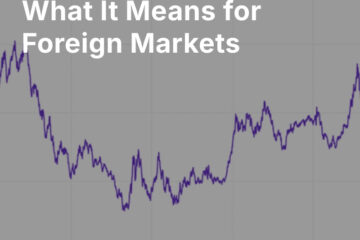Since March, unprecedented monetary and fiscal support for the U.S. economy has rolled out in waves from the Federal Reserve and from the U.S. government. Fed Chair Jerome Powell’s determination to do “whatever it takes” to ensure the stability of the U.S. financial system, and to avert a financial crisis, has been much more than verbal reassurance. The Fed quickly revived facilities from the era of the Great Financial Crisis, but also created new ones that some observers had thought would be necessary but politically impossible. The Fed’s April 9 announcement of support for parts of the U.S. high-yield debt market will likely go down in financial history textbooks.
The Fed’s balance sheet has expanded dramatically, to more than $7 trillion. The support measures implemented by the Federal government are putting the U.S. on track for a fiscal deficit of $3.7 trillion in 2020 according to the latest projections from the Congressional Budget Office. That will take the ratio of Federal debt to GDP to 101%. The money supply as measured by M2 has increased at record speed (although velocity is still low).
Impact on the U.S. Dollar
All of these facts have renewed a sense of anxiety for some about the status of the U.S. dollar. The price of gold has moved higher, partly because of generalized crisis fears, but partly because the size and speed of monetary and fiscal expansion has created worries about the ultimate effects on the U.S. dollar – and about the ultimate prospects for U.S. dollar hegemony in the global economy. The ability of the U.S. to weather the current crisis depends on the U.S. dollar retaining its global preeminence.
Over the past several years, we have often addressed these fears. We do not believe they are well-founded.
Two of the central functions of money are to be a store of value, and to be a unit of account. If holders of wealth came to believe that the U.S. dollar could not reliably perform these functions, then they would choose to hold currencies other than the U.S. dollar, and to hold assets denominated in those other currencies. The end result would be a loss of demand for U.S. dollars, and a fall in the dollar’s value relative to those other options: in short, inflation, from the perspective of dollar holders. Some even believe that there could be a catastrophic decline in the value of the dollar, so-called hyperinflation.
To us, this simply begs the question: What is the alternative? What is the better managed, more transparent, more robust, more reliable currency? Is it the euro? With all the woes of the European Union, no one believes that. Is it the yuan? It could not be unless the Chinese government relinquished totalitarian control of its financial system, adopted the rule of law, and opened its economy to the free movement of capital — and we are confident in saying that this will not happen in the foreseeable future. Is it the yen, or the Swiss franc? Neither country has the infrastructure, scale, or economic vitality needed to administer a hegemonic global currency. There are still a few visionaries who believe that decentralized cryptocurrencies will displace all government-backed currencies, but from our perspective, the technological, political, and institutional challenges that confront cryptos remain intractable.
In short, there is no current alternative to U.S. dollar hegemony, and there is no alternative visible on the horizon. Therefore we believe fears of a collapse in the U.S. dollar, whether gradual or catastrophic, are misguided.
Indeed, what the current crisis has revealed – even more acutely than the Great Financial Crisis — is that the hegemony of the U.S. dollar is so great that it imposes additional burdens on the Federal Reserve. The real risk is not that the dollar will decline catastrophically, but that that the world’s structural dollar demand could cause the dollar to appreciate so violently that it would precipitate a crisis. This eventuality would not meet with favor from the U.S. government, which would take many actions to keep the dollar from appreciating too rapidly or too much.
Because of the dollar’s hegemony, and the unique position of the U.S. as the provider of what is still the world’s most economically robust and legally reliable financial system, the entire world transacts in dollars and requires an adequate supply of dollars to maintain its financial stability.
The Fed is well aware of this reality, which is why early on in the crisis, it reopened and expanded mechanisms for ensuring that foreign central banks, and through them, foreign economies, had adequate access to U.S. dollar liquidity. These revived, reinvented, and expanded swap lines and repo facilities did not attract as much attention as the Fed’s decision to buy commercial paper and corporate debt from U.S. companies – but that action to ease the stress on foreign entities in desperate need of dollar liquidity may have saved the global economy from collapse.
Even more significantly, by providing this liquidity, the Fed reassured the world that it is dedicated to, and capable of, discharging the duties that fall on it as the de facto administrator of the world reserve currency. Had the Fed failed to act, that failure might have been the beginning of real skepticism and unrest about the negative effects of dollar hegemony.
History will likely judge Chair Powell as the man who saved U.S. dollar hegemony – not the man who destroyed it.


